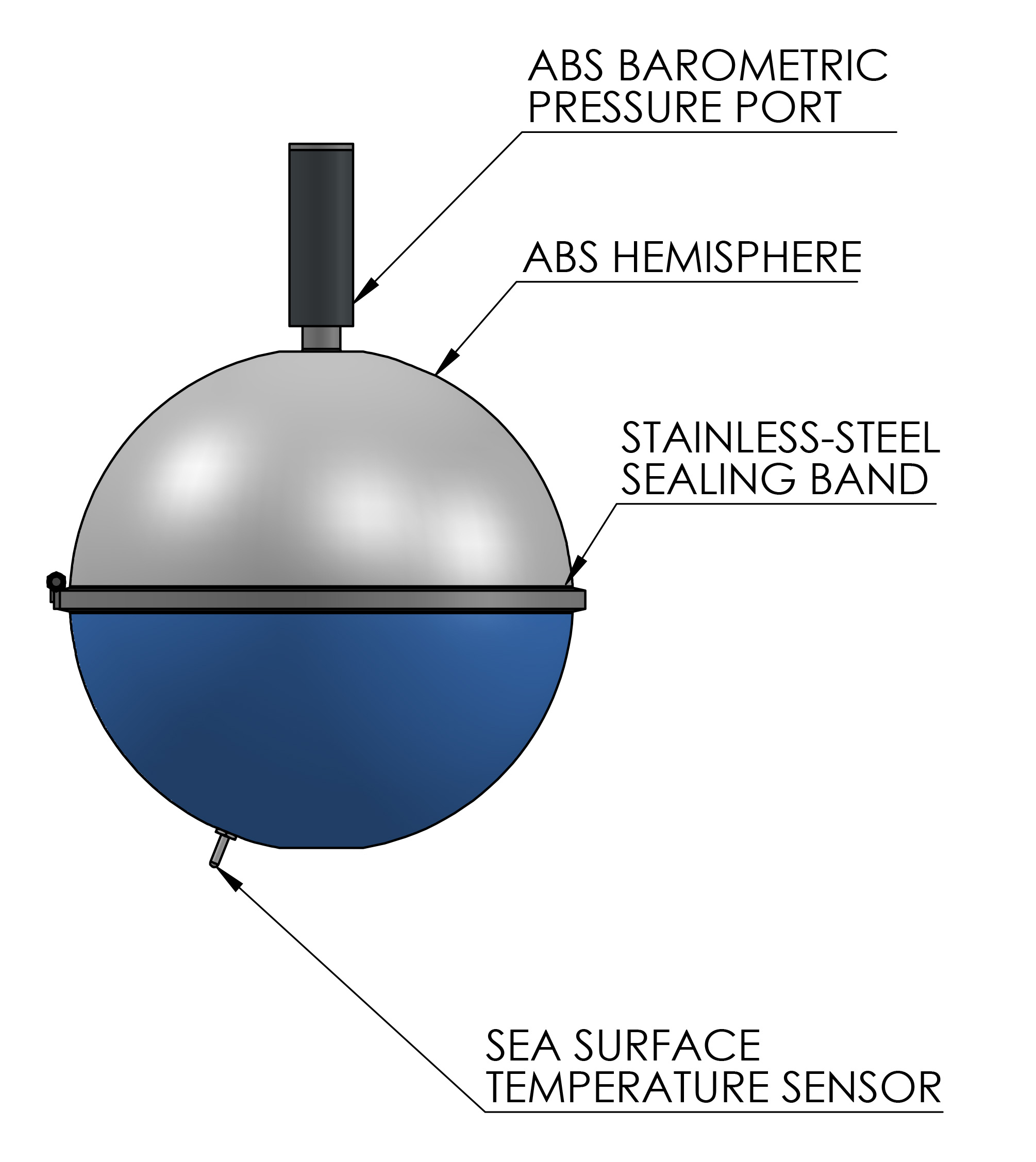
NEWS
LDL Introduces the Directional Wave Spectra Drifter (DWSD)™
The Directional Wave Spectra Drifter (DWSD; Centurioni et al., 2017), developed by the Lagrangian Drifter Laboratory (LDL) at Scripps Institution of Oceanography (SIO), is a very low cost and accurate wave rider that returns, in real time, the directional wave spectra of surface gravity waves and GHRSST compliant sea surface temperature.
The DWSD measures the orbital wave motion and is capable of a one-year-long mission with a six-hourly duty cycle. The interval between measurements is programmable over the air, and spectral wave data can be retrieved as often as every 30 minutes. The DWSD returns its data to shore using the Iridium satellite system, including engineering parameters used to assess the buoy’s health and its performance.
A Global Telecommunication System format for the DWSD is available and approved by the World Meteorological Organization, meaning that the in situ spectral wave data can be readily displayed on a variety of systems in forecasting centers and eventually assimilated into wave forecasting models. DWSD technology has been demonstrated in several instances, including through the operational deployment of several units in the global ocean as well as through the air deployment of five DWSDs ahead of hurricane Michael in October 2018. Significant wave heights of the order of 8 m are commonly observed.
The DWSD and the SVPB drifter technology (Centurioni, 2018) can be easily integrated by simply adding an accurate barometer to the DWSD. Both systems were developed by the LDL, and the integration is trivial because the two instruments share many components and are driven by the same microcontroller, also developed in house (Figure 1).
Deployment Methodologies
Air deployment: The DWSD and the DWSBD can be deployed using custom build carboard boxes. The overall dimensions of the deployment packages, including base and canopy, are 18″ × 18″ × 24″ for the DWS drifter and 18″ × 18″ × 30″ for the DWSBD. Upon impact with water, the canopy and rigging are separated from the box via a water release mechanism.
Ship deployment: The small air deployment boxes can be quickly adapted for ship deployments by removing the canopy and rigging when the air deployment option is impossible.
Rationale for Open-Ocean Deployments
The US federal government and various US research institutions jointly operate a national wave observation network (IOOS and USACE, 2009). The network is positioned in shelf and coastal areas, but cannot support open-ocean directional wave observations. Offshore wave observations are important for validating wave forecasting products and search and rescue operations, and for increasing the accuracy of operational warnings issued during extreme events, such as those associated with storm surges, winter storms, and hurricanes. From a scientific standpoint, directional wave observations are crucial to improving the description of air-sea gas exchanges, of how the atmosphere forces the ocean, and ensuing feedback processes. They are also important for tropical cyclone research, for trans-basin swell propagation prediction, for wave-wave and wave current interactions, and for increasing understanding of the processes leading to the observed stratification of the upper ocean. Newly launched satellite missions are designed to observe the ocean roughness and can produce data sets of wave properties and wind, and, consequently, there is a pressing need for in situ wave observations.
The LDL will try to fill the observational gap in the offshore US observational network and evaluate its impact on forecasting with US and international partners.
References
Centurioni, L., L. Braasch, E. Di Lauro, P. Contestabile, F. De Leo, R. Casotti, L. Franco, and D. Vicinanza. 2017. A new strategic wave measurement station off Naples port main breakwater. Proceedings of the 35th Conference on Coastal Engineering, Antalya, Turkey, 35, https://doi.org/10.9753/icce.v35.waves.36.
Centurioni, L.R. 2018. Drifter technology and impacts for sea surface temperature, sea-level pressure, and ocean circulation studies. Pp. 37–57 in Observing the Oceans in Real Time, R. Venkatesan, A. Tandon, E. D’Asaro, and M.A. Atmanand, eds, Springer International Publishing, Cham, https://doi.org/10.1007/978-3-319-66493-4_3.
IOOS and USACE (Integrated Ocean Observing System and US Army Corps of Engineers). 2009. A National Wave Observation Plan. Prepared for the Interagency Working Group on Ocean Observations, 36 pp, https://cdn.ioos.noaa.gov/media/2017/12/wave_plan_final_03122009.pdf.


